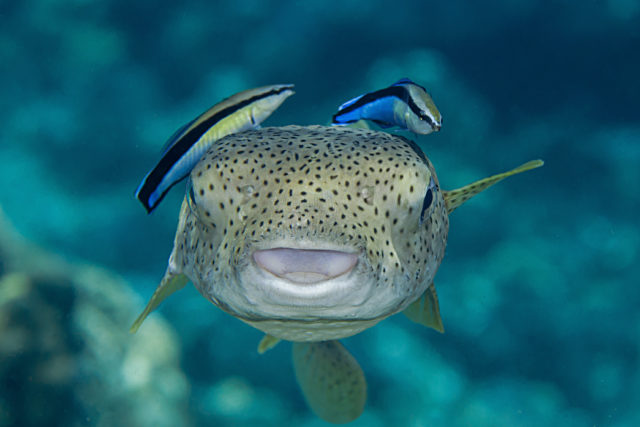This tiny fish species has just passed the mirror self-recognition test
But are they actually self-aware like humans?

A tiny tropical fish has become the latest species to pass a classic test for determining self-awareness.
The cleaner wrasse (Labroides dimidiatus), which is about the size of a human finger, joins a small group of mammals and birds to perform well in the mirror self-recognition test (MSR).
Also known as the mark test and the red spot technique, the MSR is a behavioural technique that was developed by psychologist Gordon Gallup Jr in 1970 as a way to assess whether animals possess visual self-recognition abilities.
While there are various methods to do this, the researchers used the classic test, which involves giving the animal anaesthesia and then “marking” it with paint or attached sticker on an area of the body that it cannot normally see.
When the animal recovers from the anaesthetic, it is given access to a mirror.
If the animal appears to investigate the mark, it is seen as an indication that the animal perceives the reflected image as itself.

Chimpanzees, bottlenose dolphins, pigeons and Eurasian magpies have previously passed the test.
In the experiments, a team of researchers from Japan, Germany, and Switzerland put 10 fish into individual tanks with mirrors.
At first, the fish behaved aggressively and attacked their own reflection, thinking it was someone else.
But over the course of a few days, their behaviour changed to become friendlier.
Next, the researchers dabbed a spot of coloured gel on the heads of eight of the fish – which they could only see while looking in the mirror.
The majority of the fish spent time in positions where the gel was visible in their reflection while a few of them spent more time than usual trying to scrape that same area using the tools available in the surrounding environment.

While the fish may have passed the MSR test, the researchers are also open to the possibility that the cleaner wrasse may have seen the marks as parasites on the skin of other fish.
This is because this species of fish are known to form mutualistic relationships with other fish by feeding on parasites living on their skin.
The team wrote in their paper: “This remarkable finding presents a challenge to our interpretation of the mark test – do we accept that these behavioural responses in the mark test, which are taken as evidence of self-recognition in other species, mean that fish are self-aware?
“Or do we conclude that these behavioural patterns have a basis in a cognitive process other than self-recognition?”
The research is published in open-access paper bioRxiv.





